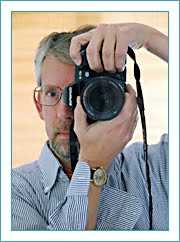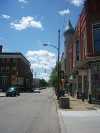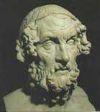 |
Pierre Bonnard, The Table (1925)
Tate Gallery, London |
The Legion of Honor, in San Francisco, is now exhibiting a large group of works by Pierre Bonnard (1867-1947), the first major show of the artist's work on the West Coast in 50 years, according to the Legion's website. The show is
Pierre Bonnard: Painting Arcadia.
The layout is roughly, although not strictly, chronological. The first spaces focus on early work, generally from around 1890—the artist's Nabi period. The latest pieces are from the mid-1930s or so, but most of the work is arranged thematically. One grouping is mostly nudes, another mostly interiors. Later rooms focus on large mural-like pieces Bonnard painted for patrons.
 |
| Pierre Bonnard, Table Corner (1935) |
Bonnard's career was a long one. In terms of artistic movements, his working life spanned late Impressionism, Post-Impressionism, Pointillism, Art Nouveau, Symbolism, Expressionism, Fauvism, Futurism, Surrealism, the rise of pure abstraction in the Western artistic tradition, Art Deco, and Cubism, not to mention coinciding with a period of great evolution in photography. Yet, Bonnard always did his own thing. Although his work is clearly of its time (sometimes reminiscent of Matisse or Dufy), although his instincts were aligned with those of the Post-impressionists and the Symbolists, and despite a strong impact on his sensibilities from Japanese art, he never was tempted to experiment with Cubist deformation or to embrace abstraction, even as those two trends began to dominate modern art in the West. His favorite subjects remained richly colored interiors, somewhat mysterious nudes in interiors, and landscape and lush vegetation. Although some of Bonnard's work has strong abstract qualities—in this show, notably
Table Corner (1935)—he never completely gave in to the abstract impulse. Ultimately, he was a sensualist.
 |
Pierre Bonnard Nude Before the Mirror (detail; 1931)
Galleria Internazionale d'Arte Moderna at Ca' Pesaro, Venice |
The brushstroke is always evident. There is no attempt at strict realism, there is no attempt to hide the hand of the artist, to create an illusion of reality. His technique is thoroughly modern if we understand modern to have begun with Impressionism. His technical proclivities could be quite contradictory; he was at once fond of thin washes that let canvas show through the paint and of leaving areas of canvas entirely untouched—this transparency creating an effect suggestive of watercolor—while happily applying heavy dabs of paint right from the tube in other areas, or applying thick, creamy layers of paint for effect.
Nude Before the Mirror (1931), on loan from Galleria Internazionale d'Arte Moderna at Ca' Pesaro, in Venice, provides an excellent example of the transparency. Shown here is a detail of what appear to be curtains at a window behind the nude figure (above). In contrast, in
The Table (1925), on loan from the Tate Gallery, London, (top of this page), Bonnard's impasto nicely suggests slabs of creamy cheese and shrimp on crackers and his lemons glow with thick oval smears of cadmium yellow. The slatherings of Wayne Thiebaud come to mind.
 |
Pierre Bonnard, Woman Dozing on a Bed (1899)
Musée d'Orsay, Paris |
The nudes are somewhat unsettling. They are always ambivalent—simultaneously a celebration of the female body and expressive of uneasiness.
Woman Dozing on a Bed (1899), from the Musée d'Orsay, depicting the artist's lover (and later wife) Maria Boursin (also known as Marthe de Méligny), stretched out on a bed, is something of an exception. It seems a comparatively straightforward record of post-coital indolence (the painting is also known as
The Indolent Woman). The painting captures lust renewed by the sight of lust temporarily slaked. It is the most purely erotic painting among the nudes. It brings Modigliani to mind in its apparent motivation, if not in style. Yet this painting, too, has deeper nuances. Stylistically, it evokes Edvard Munch, and no 20th century artist was better at expressing anxiety about sex and desire than Munch. A cat is curled up in the shadow of the model's hair. Everywhere there are cats.
 |
Pierre Bonnard, Nude in the Bathtub (1925)
Tate Gallery, London |
Some of Bonnard's later nudes seem more relaxed, as if the artist decided it's better in the end to celebrate sensuality (
Woman Dozing on a Bed is an early work—among Bonnard's first nudes) even if he can never allow himself (or us) to be entirely at ease. Although the unsettling effects I speak of are real—created by veiled faces, turned-away poses, odd perspectives, and startling truncations—simultaneously there is much beauty in the nudes and their settings. In some of these paintings, color, surface pattern, and the female form manage to appear more important than oddities of composition, and, subordinated to the figure, they enhance rather than detract from sensual qualities. In others, however, it's harder to make a case for pure sensuality. Bonnard is paradoxical.
Nude in the Bathtub (1925), from the Tate, London, is a case in point. The figure is cut off at the hips, partially submerged in a bathtub that appears lifted several feet off the floor—in the room but not
of the room. Another figure, apparently male, perhaps the artist, enters from the left. Time seems to have stopped. It is a pregnant pause.
The Bathtub (below), also from 1925 and in the Tate London collection, is similar.
 |
Pierre Bonnard, The Bathtub (1925)
Tate Gallery, London |
 |
| Pierre Bonnard, Marthe in the Bath, (c. 1908-1910) |
Other highlights of the show include a group of rarely seen self-portraits and photographs by Bonnard, mostly small (about 2 x 2.5 inch) snapshots of friends and family, including travel photos. These small photos are modern prints from the original negatives. They're probably contact prints (printed at the same size as the negative), although enlarged in the exhibition catalog (and here). Wall text gives no information about size, but goes out of its way to point out that these were snapshots, that Bonnard would not have considered them artistic work. Nevertheless, a clear sense of composition is apparent in all the images, and one,
Marthe in the Bath, a nude of Marthe de Méligny, with its ambiguous foreground and motion-blurred face, has all the qualities of the painted nudes.
The large mural-sized works that close the show include two of special interest, a pair of works commissioned by art critic George Besson for his Paris apartment. The first, completed in 1912, is a daytime scene. The second, from 1928, a full 16 years later, is a night scene (shown here). Both depict La Place Clichy, in Paris, as seen from inside a brasserie. Bonnard certainly loved cadmium yellow—and cats.
 |
| Pierre Bonnard, La Place Clichy (1928) |
A large number of the paintings on display are from The Musée d'Orsay, in Paris, the Tate, London, and the National Gallery, in Washington D.C., and from other museums I've visited on multiple occasions. Despite that, and, although I've always admired Bonnard's work, I can't remember seeing a single piece in this show before. Everything seemed fresh. There are more than 70 works on display, but the galleries have been generously allocated. Nothing seems crowded. There is just enough to be deeply satisfying without causing fatigue. Notable for the quality of the work and for its breadth, going well beyond Bonnard's Nabi period,
Pierre Bonnard: Painting Arcadia runs at the Legion of Honor through May 15, 2016.

























































